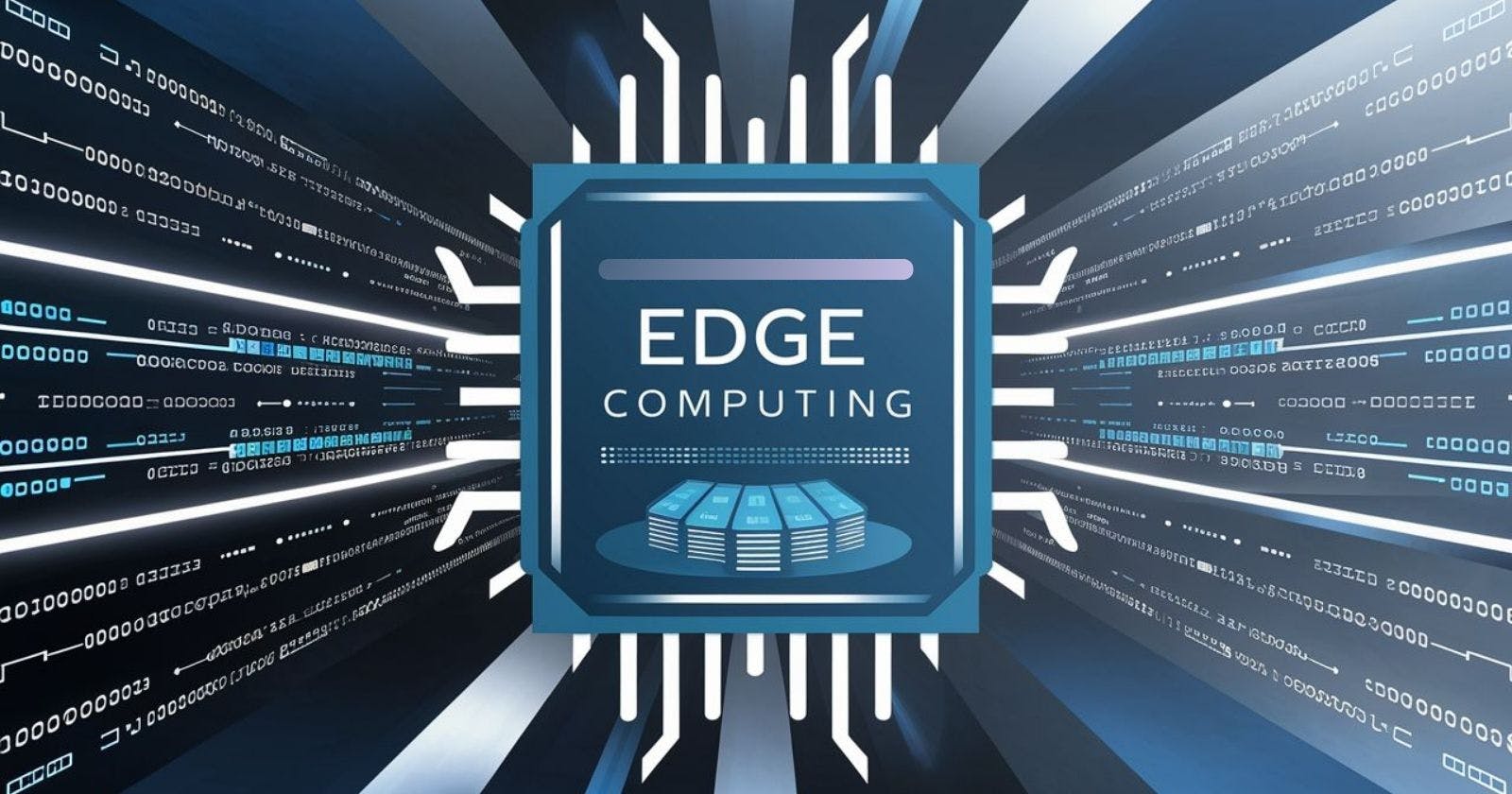Table of contents
Hey there! Today, let's dive into the realm of computing that's edging its way closer to us... quite literally - Edge Computing!
What exactly is Edge Computing?
Wikipedia states: "Edge computing is a distributed computing model that brings computation and data storage closer to the sources of data, so that a user of a cloud application is likely to be physically closer to a server than if all servers were in one place."
Instead of relying solely on centralized data centers or cloud computing resources, edge computing distributes processing power to the "edge" of the network, often within or near the devices themselves.
In simple words, Edge Computing is like bringing the brains of the cloud closer to where the action is happening – think of it as cloud computing's hip younger sibling who likes to hang out where the action is.
Instead of sending all your data on a long and winding journey to some distant server farm (where it might stop for a cup of coffee), Edge Computing brings the processing power closer to you. It's like having a mini data center right in your neighborhood – minus the noisy cooling fans and the scary server racks.
Advantages of Edge Computing
Reduced Latency
Bandwidth Optimization
Improved Data Privacy and Security
Enhanced Reliability
So is it going to replace Cloud Computing?
Edge Computing isn't about replacing the cloud; it's about complementing it. It's like adding a turbo boost to your internet, making everything faster, smoother, and more reliable.
It's also about efficiency and scalability. By distributing the workload across a network of edge devices, we're not just lightening the load on the cloud – we're also future-proofing our digital infrastructure for whatever challenges lie ahead.
Edge Devices
Edge devices refer to any computing device that operates at or near the edge of a network. These devices are designed to collect, process, and analyze data locally, often in real-time, before transmitting relevant information to a centralized system or the cloud. Sensors, smartphones, smart appliances, industrial machinery - all are examples of edge devices.
An enormous amount of data is being generated by today's IoT devices, yet most of this data is not used to make decisions. Edge computing can harness growing in-device computing capability to provide deep insights and predictive analysis in near-real time. This increased analytics capability in edge devices will power innovation to improve quality and enhance value.
But how does it actually work?
Data Generation: Data is generated at various endpoints such as sensors, devices, or machinery. This data can include sensor readings, user interactions, environmental data, etc.
Data Collection: Edge devices collect the data locally from their respective sources.
Local Processing: Instead of sending all the raw data to a centralized server or cloud, edge devices process and analyze the data locally. These processes may include filtering, aggregation, analysis, and even running AI algorithms.
Local Decision-making: Edge devices can make autonomous decisions based on the processed data without needing to constantly communicate with a central server. This is particularly important in scenarios where real-time decision-making is critical, like autonomous vehicles or industrial automation.
Data Transmission: In some cases, processed data or selected insights are transmitted to a centralized server or the cloud for further analysis, storage, or long-term processing. However, edge computing aims to minimize data transmission by handling as much processing as possible locally.
Feedback Loop: Edge devices may also send feedback or updates back to the data sources or to other connected devices, enabling dynamic adjustments or optimizations based on the processed information.

Impact of Edge Computing on the Present and the Future
Edge Computing isn't just a buzzword; it's a seismic shift in how we approach computing and data management. Its impact is already being felt in the present, and its potential to shape the future is nothing short of revolutionary.
The reduced latency of the edge has significant implications for real-time applications like gaming, video streaming, and autonomous vehicles, where even milliseconds can make a difference!
By distributing computing power across a network of edge devices and servers, Edge Computing reduces the risk of single points of failure. This means improved reliability and uptime for critical systems, from industrial automation to healthcare monitoring.
It enables a more distributed and scalable architecture, allowing organizations to easily scale their computing resources up or down based on demand. This flexibility is particularly valuable in dynamic environments such as IoT deployments and smart cities.
Edge Computing facilitates the deployment of artificial intelligence (AI) models directly on edge devices, enabling intelligent decision-making at the point of data generation. This opens up new possibilities for applications such as image recognition, predictive maintenance, and personalized user experiences.
Looking ahead, Edge Computing holds the key to unlocking a host of futuristic technologies, including Augmented Reality (AR), Virtual Reality (VR), and autonomous drones. By bringing computing power closer to users and devices, Edge Computing paves the way for immersive experiences and unprecedented levels of automation.
As we harness its power in the present and unlock its potential for the future, one thing is clear – the 'edge' is where the action is, and the possibilities are endless.

